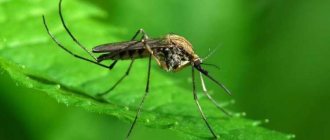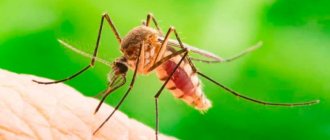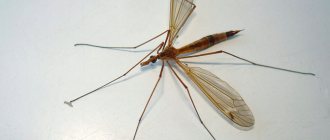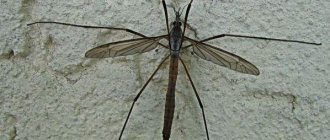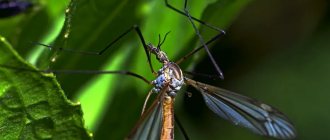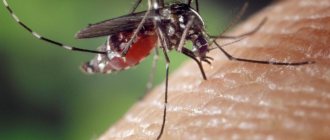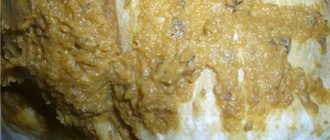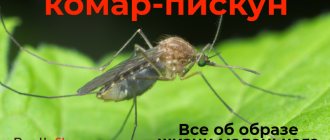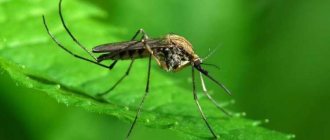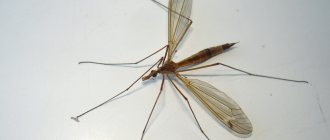Gradual climate change leads to the migration of insects to regions previously unfamiliar to them. Previously, it was believed that the Asian tiger mosquito lives only in Southeast Asia, but already in the middle of the second half of the 20th century, scientists began to discover this pest in other regions. Moreover, entomologists have come to the conclusion that this insect can be found at certain times of the year almost anywhere in the world, except in areas with extremely cold climates. This carrier of dangerous diseases also lives in the south of Russia.
Description of the species
Does a lamp help against mosquitoes?
Does a lamp help against mosquitoes?
Review of popular models, rating, operating principle. Is it worth taking?
netkomaram.ru
Open ›
Latin name: Aedes albopictus. These are Asian tiger mosquitoes or simply striped mosquitoes. This popular name is due to the characteristic black and white coloring of the legs and body of the bloodsucker. The adult's back is black with a distinct white stripe down the center. The insect has an average size for this family: from 0.2 to 1 centimeter, with males on average 20% smaller than females. Sexual dimorphism is manifested by the presence of porous antennae and the oral apparatus modified for nectar feeding in males.
People are often interested in the difference between a tiger mosquito and a regular one. These carriers of infections can be distinguished from less dangerous mosquitoes not only by their coloring, but also by their body structure: the abdomen gradually narrows in the distal region. The tiger mosquito is much smaller than the more common bloodsucker species in Europe and Russia (Culiseta annulata). In other countries, there are similar types of pests that are not so easy to distinguish.
The white-striped mosquito was first described in the late 19th century by Australian scientist Frederick A. Askew Skewes. Initially, the genus was determined incorrectly, but already in the middle of the last century, entomologists managed to correctly classify it. In recent years, there has been discussion about the feasibility of identifying a separate genus for the Asian tiger mosquito.
Other articles in the section: Life cycle of a common mosquito
Go to website
Mosquitoes in Thailand
Thailand is a country “rich” in mosquitoes. And this is not surprising, since unique conditions for their life have been created here. There is simply an abundance of malaria mosquitoes, tiger mosquitoes, long-legged mosquitoes and others, no less dangerous. Mosquitoes in Phuket deserve special attention, since as a result of their bite a person can become ill with malaria, typhus, tropical fever and other ailments. In Thailand you can find both the smallest species of blood-sucking insects and the largest. Everyone who travels to this country, both on business and on vacation, is required to familiarize themselves with the safety rules. In this case, vaccination is required.
Where do they live?
The tropics and subtropics are ideal habitat conditions for this insect. Most often, the striped mosquito can be found in Southeast Asian countries. In these regions, the insect remains active all year round. The ability to adapt to harsher climatic conditions has allowed Aedes albopictus to migrate to other countries. The black striped mosquito survives in temperate or cold climates by hibernating. At the same time, eggs of insect strains living in cold regions have increased resistance to low temperatures. Adults sometimes remain active in warm areas during the winter.
You might be interested to know: Where do mosquitoes come from in an apartment?
The tiger mosquito lives in Russia, but is not a common mosquito. Most often they can be found in the south of the country. No more than 1,000 bites are reported annually, with rare cases of disease transmission. In summer, the insect is often found in the Krasnodar Territory, Rostov Region, Stavropol Territory and Kuban. In other regions, the likelihood of suffering from a bite from this bloodsucker even on hot summer days remains low, but further migration towards areas with a cold climate cannot be ruled out.
How to protect yourself
Protection against all types of blood-sucking insects is the same. Premises in areas where they are active must have mosquito nets. Aerosols containing insecticidal and repellent agents should be applied to clothing. If possible, it should cover open areas of the body. Otherwise, special creams should be applied to them. Natural substances that repel mosquitoes include:
- dried chamomile flowers, stems and leaves;
- elderberry branches;
- juniper, clove, anise, basil, valerian and eucalyptus oils;
- sagebrush;
- pine cone smoke;
- camphor;
- citrus.
Itching at the site of the bite is eliminated:
- cold compress or ice;
- onion juice;
- lemon;
- honey;
- Apple vinegar.
If you have an allergic reaction, you should take antihistamines.
Transferable diseases
It is important to know how dangerous the tiger mosquito is for humans, since every year Aedes albopictus adapts to new habitat areas. In Russia, this bloodsucker most often infects people with West Nile fever. This is an acute viral infection that can lead to death due to inflammation of the membranes and tissues of the brain. The pathology differs from other infections by skin rashes, proliferation of lymph nodes, redness of the conjunctiva and other signs. No vaccination has been developed to prevent this disease.
A tiger mosquito bite can also lead to the development of the following infections:
- yellow fever;
- dengue fever;
- Chikungunya virus;
- Zika virus.
All of these infections are considered dangerous due to possible complications and the risk of death. Cases of most of these diseases are predominantly recorded in tropical countries. Only cases of West Nile fever have been confirmed in Russia. Special studies aimed at assessing the prevalence of infectious insects have not yet been carried out.
Another possible threat is a hypersensitivity reaction to the bite. In some patients, the allergy can be severe with the development of anaphylactic shock. Symptoms of this condition include redness, swelling, and dizziness. With such a complication, a person will need immediate medical attention.
Mosquito boom in Crimea
According to experts, there is nothing unusual about the mosquito invasion in the summer of 2022. A warm spring and plenty of rain in late spring and early summer contributed to the formation of many damp places. Regular rains have restored the normal population of these insects, which had significantly thinned out in previous dry years.
Another reason is the decrease in the number of swallows, swifts and mice. The preparation of Crimean residents in case of another summer without precipitation also made a contribution. Insects did not fail to take advantage of huge barrels of stored water to lay eggs in stagnant water.
Residents of many settlements demand that the authorities chemically treat the places where they breed. It is carried out periodically. Ecologists oppose this, pointing to a possible imbalance in the biosystem. Many birds and fish feed on the larvae of these insects, so massive chemical intervention can deprive them of food.
What to do if bitten by a tiger mosquito
The bloodsucker is distinguished by its aggressive character and high activity at almost any time of the day. A person may not notice the moment of the attack and only later pay attention to the symptoms that arise. People often ask experts what a tiger mosquito bite looks like. In fact, external signs often do not differ from those upon contact with other types of insects.
Manifestations in the bite area:
- hyperemia of the skin around the site of proboscis insertion;
- swelling of the skin;
- formation of a hard lump;
- itching and soreness.
A bite from a mosquito with striped legs is not a reason to panic. Not all individuals carry dangerous diseases. You need to take into account the prevalence of infections in your region and monitor your well-being. If after a few hours complaints of vomiting, dizziness, increased body temperature, headache, weakness and other alarming symptoms appear, you should immediately consult a doctor. Similar tactics when detecting allergy symptoms.
The appearance of mosquitoes by time of year
The first mosquitoes in Crimea, as elsewhere, appear at temperatures of +10…+12 °C. The mosquito wave becomes widespread in May. As temperatures rise, their numbers increase, reaching a peak in June at 23 °C. In July and August, insects become fewer: at temperatures of 28 °C and above, mosquitoes can only be seen near wetlands with high humidity. There are even fewer of them in September. Mosquitoes disappear at temperatures of 10 °C and below: they hide near swamps, in hollows and under the bark of trees, as well as in crevices of wooden buildings. Larvae in the form of pupae overwinter in water.
Mansonia, Mansonia
This mosquito is similar to Coquillittidia in that it is very aggressive and feeds on large mammals. Most active at dusk. Mansonia larvae are associated with aquatic plants, water lettuce, hyacinth, reeds, and attach to roots to obtain oxygen.
A study published in 2013 determined that the mosquito Mansonia dyari
Belkin, Heinemann, Page should be considered as potential carriers of Rift Valley fever.
They fly long distances to search for food.
Not all people are allergic to mosquito saliva
Mosquito saliva lubricates the proboscis to better glide over the skin and penetrate its thickness. When a mosquito finds a good vessel under the skin, it also releases some of its saliva into the wound. Most people experience a skin reaction after being bitten by a mosquito. The pain from the bite and the resulting red bump are tolerable, but the constant itching just drives us crazy.
The fact is that during a mosquito bite, our immune system sends immunoglobulins (antibodies) to the affected area. These antibodies cause your mast cells to release histamines to fight the foreign substance. Histamine reaches the affected area, causing the blood vessels there to swell, and it is the action of histamine that causes the lump. When the blood vessels dilate, the swelling irritates the nerves, which feels like itching. However, some people do not have this reaction to mosquito bites and even avoid mosquito bites because their sweat has repellent properties.
Appearance and features
Photo: What a centipede mosquito looks like
Long-legged mosquitoes (Tipulidae) are insects belonging to the Diptera family, suborder long-whiskered. They represent the largest mosquito species and reach a maximum body length of almost 40 mm, and a wingspan of more than 50 mm. Despite their size, weevil mosquitoes have a very slender body and narrow wings.
The external color usually varies from gray to brown, in some genera it can be yellow and even black and yellow or black and red. The wings are most often black in color and are laid back in the resting position. Like all dipterans, the hind wings turn into swinging joints (holders). In some species, the forewings are stunted. Their antennae have up to 19 segments. The insect also has a different V-shaped suture on its thorax.
The head is retracted, in the form of a “stigma”. It moves forward, making the proboscis very soft and capable of absorbing only liquids. The posterior end is clearly thickened and carries male fertilizing cells and female egg-laying cells, formed from the abdominal appendages. There are long antennae on the head.
Long legs are affected, which often have predetermined breaking points and, accordingly, quickly break off. They are very elongated. In long-legged mosquitoes (with the exception of the genus Indotipula, the legs have large processes called spurs. In addition to two large compound eyes, some species have rudimentary ocelli on the head.
Now you know whether the centipede mosquito is dangerous or not. Let's see where these insects are found.
How long do mosquitoes live?
An adult mosquito can live no more than 5–6 months. Probably few live to this advanced age, given our desire to squash them as quickly as possible. However, under certain circumstances, an adult mosquito has a fairly long lifespan (by insect standards).
Most adult females live two to three weeks. The eggs can dry out within eight months and still remain viable, and will hatch into a new generation of insects.
Mosquitoes in the tundra
In the tundra, despite such difficult natural conditions, where there is practically no summer as such, there are some species of blood-sucking mosquitoes, such as the biting mosquito with two stripes, as well as other species - blood-sucking mutants. There are a lot of midges, winter mosquitoes and jerk mosquitoes here. Of particular note is the fact that here mosquitoes behave especially ferociously, compared to other natural habitats.
It is very important to know how to distinguish different types of mosquitoes from each other by their appearance. This will help protect yourself in various conditions, especially when you are in nature.
Why do mosquitoes still exist?
Mosquitoes populated the planet long before humans. The oldest mosquito fossils date back to the Cretaceous period, about 200 million years ago. There are more than 3,500 species of mosquitoes around the world, but only about 200 bite humans. Essentially, mosquitoes still exist because they are almost impossible to kill without consequences.
Not a single species of living being on Earth exists in isolation. As long as mosquitoes can find food and are not under too much environmental pressure, they will continue to exist. In the ecosystem, they serve as food for other species (birds, frogs, fish, etc.).
etc.), as well as pollinators. The larvae eat detritus in the water, helping to clean the water.
What does the centipede mosquito eat?
Photo: Large centipede mosquito
Adults feed on available open plant juices, such as water and nectar, as well as pollen. They cannot absorb other denser foods through their mouthpieces. While the larvae consume decaying plant remains, they also consume tissues of living plants, causing significant damage to forestry and agriculture. Most people misidentify large mosquitoes from this family, mistaking them for dangerous malaria mosquitoes. Many people believe that they bite very painfully.
Interesting fact: The common assumption that centipede mosquitoes “sting” people has already been refuted by researchers by the fact that the sting of these mosquitoes cannot penetrate human skin.
The process of digestion itself is interesting. The main part of their diet is plant food, consisting of overly persistent substances that are difficult to digest. Namely fiber and lignin. To assimilate them, single-celled living organisms come to the aid of the larvae, which appear en masse in the intestines of the larvae. These cellular organisms secrete enzymes that help digest fiber.
The main food products of long-legged mosquito larvae include:
- humus;
- plant roots;
- moss;
- seaweed;
- detritus.
The internal single-celled organisms of the larvae help the food to be enriched with necessary substances, as a result of which the food is easily digested. Moreover, in the intestines of the larvae there are special blind outgrowths in which food is retained and where special conditions are created for the proliferation of microorganisms. A similar type of digestive system is also found in vertebrates, for example horses, and not just insects.
Psorophora, Psorophora
They are considered extremely aggressive. They feed on large mammals, including humans, and fly long distances to search for food.
They breed in temporary flood waters such as forest pools, roadside ditches and pastures. Some of the largest mosquito species come from this genus. They are active in the evening, but bite during the day in shaded areas.
Some mosquitoes avoid biting people
Not all types of mosquitoes feed on human blood. Some mosquitoes specialize in other animals and do not bother you or me at all. The stinging mosquito (Culiseta melanura), for example, bites almost exclusively birds and very rarely attacks people. Another species of mosquito , Uranotaenia sapphirina, is known to feed on the blood of reptiles and amphibians.
Uranothenia (Uranotaenia sapphirina). © Lawrence Reeves
Females bite people, and males feed on nectar
This fact is already known to many, but we nevertheless continue to say that we were bitten by a mosquito, although only mosquitoes attack. Female mosquitoes need protein and iron for their eggs and must feed on blood to reproduce. Since males do not bear the burden of producing offspring, they avoid humans and feed on flower nectar.
When females are not laying eggs, they also happily consume flower nectar. By collecting nectar, mosquitoes pollinate plants, which ensures the reproduction of various plant species. When mosquitoes pollinate plants, especially aquatic ones (where they spend most of their lives), they help maintain those plants, which in turn provide shelter or food for other animals and organisms.
Mosquitoes are very sensitive to the odors released by our glands
Wyeomyia, bromeliad mosquito
This species is closely related to bromeliads and insectivorous plants. They lay eggs on bromeliad plants, where the larvae develop. They are not an invasive species unless people travel to areas where bromeliad plants grow.
Sources : Public Health. Pest control: Training manual. 2001. FL DACS, Bureau of Entomology.
Fungus gnat, Mycetophilidae
The fungus gnat (Mycetophilidae, Bolitophilidae, Ditomyiidae, Diadocidiidae, Keroplatidae, Lygistorrhinidae) is a diverse and numerous group of insects of the order Diptera. About 3,000 described mosquitoes are placed in 150 genera, but the true number is undoubtedly much higher.
Adult insects are distinguished from other mosquitoes by their humpbacked appearance and spiny legs. Fungus gnats live in forests. Found on all continents except Antarctica. They form large swarms and play an important role in the forest food system.
Ground-based fungus gnat larvae typically feed on mushrooms. Sometimes they eat moss. The larvae are partly predatory.
Bioluminescence
About a dozen different fungus gnats, mycetophilids, are unique in their display of bioluminescence. In some, this is limited to the larval stage; in others, the feature persists into pupae and adults. The ability to produce its own light is used by some predatory larvae as bait for prey. This also makes them more vulnerable to predators and parasites.


